Big money goes into making the most beautiful parts of Madrid hostile towards the homeless, and examples of these disturbing installations can be found everywhere you look.
There are estimated to be over 2,500 homeless people living in Madrid. Just less than a thousand of them are routine rough sleepers, and the rest are the ‘hidden homeless’, who between sofa-surfing spend the odd night in one of Madrid’s few homeless shelters. If the shelters are full, they may roam the streets until morning, bedding down as a last resort.
READ ALSO My Spanish Story: 'I was homeless for two years but it felt like a lifetime'
State-run homeless shelters have beds for around 650 people per night across Madrid, although just last week Samur Social announced that it’d be providing an additional 539 beds per night during the winter months, totalling well over a thousand beds per night. Surely that’s enough to completely stop people sleeping in the streets, but sadly, it’s far more complicated than that.
The reported 919 people who routinely sleep in the streets have been doing so for years. At least half are foreigners – mostly Eastern European and African migrants – and almost half of all homeless people in Madrid also have serious, untreated mental health issues.
For many, sleeping on the streets is often preferred to shelters for numerous reasons: a struggle to adhere to the shelters’ strict rules, having to confront personal or mental health issues, and the belief that sleeping rough is actually safer than staying in a shelter.
As the nights get longer and colder, however, simply getting off the ground becomes a priority, and that’s when the hostility of Madrid truly emerges…
ANTI-HOMELESS BENCHES
Armrests cleverly disguised as adding comfort to the bench-user are in fact obstacles to lying down.
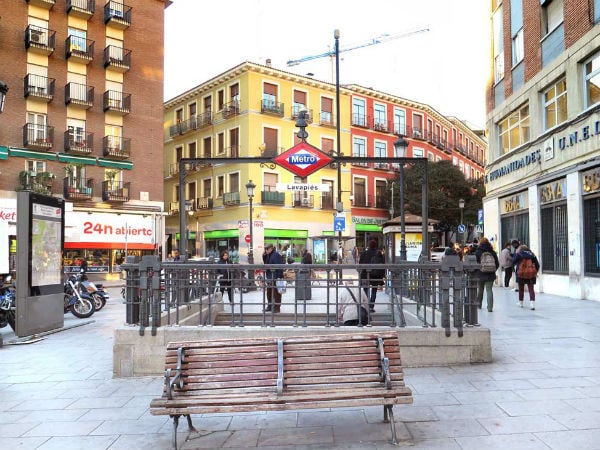
A bench with armrests in Lavapiés. Photo by Leah Pattem.
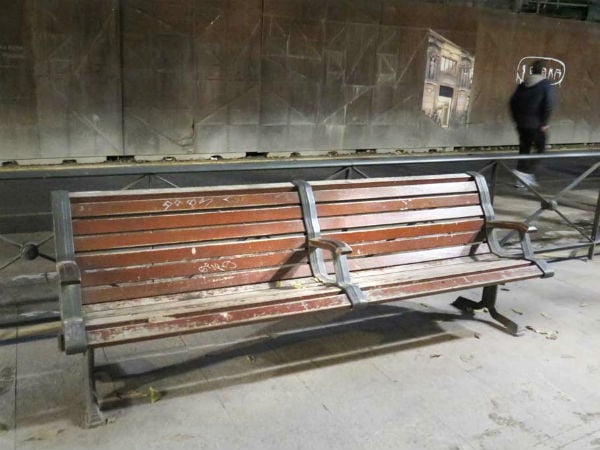
Outside the Casino by metro Sevilla. Photo by Leah Pattem.
The new benches along the recently pedestrianised Calle Carretas and the new Gran Vía have sloping angles. Their anti-rainwater feature also conveniently doubles up as sharp angles if slept on.
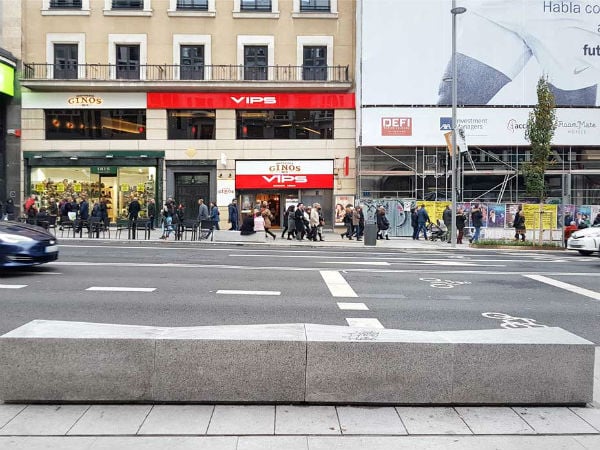 Concrete bench on Gran Vía. Photo by Leah Pattem.
Concrete bench on Gran Vía. Photo by Leah Pattem.
ANTI-HOMELESS BUS SHELTERS
Seats inside a bus stop, which were once a popular shelter for rough sleepers, are now impossible to lie down on.
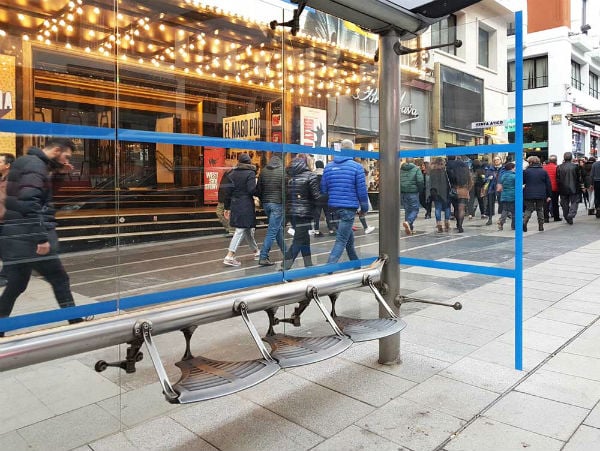 A bus shelter on Gran Vía
A bus shelter on Gran Vía
Note the obstacle two thirds of the way along this bench:
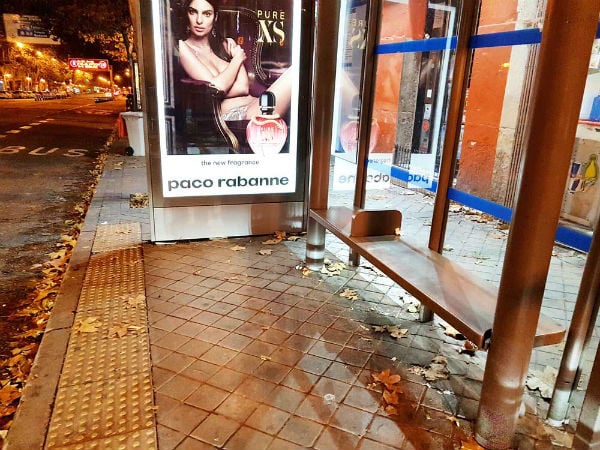
A bus shelter near Atocha. Photo by Leah Pattem.
HOSTILE WINDOW FRAMES
At Sol, you can find numerous examples of window frames decorated with defensive balls or sloped surfaces.
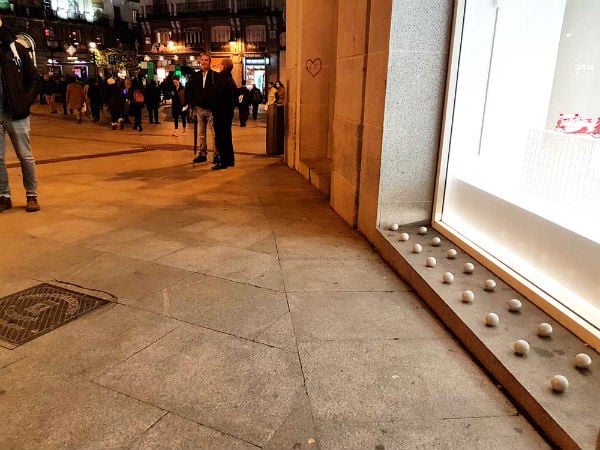
Corte Inglés on Sol. Photo by Leah Pattem.
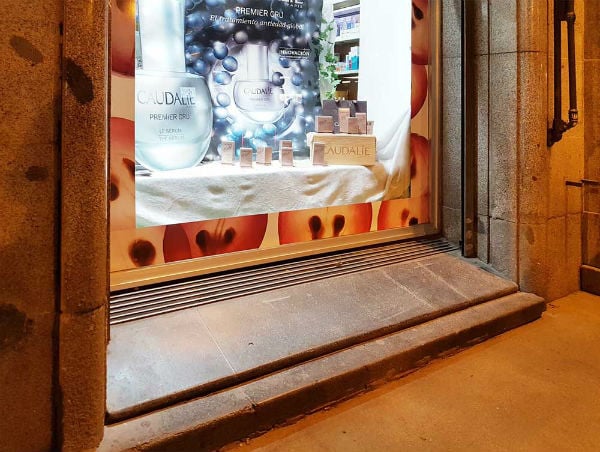 Puerta del Sol. Photo by Leah Pattem.
Puerta del Sol. Photo by Leah Pattem.
HOSTILE ENTRANCES
These examples aren’t even subtle.
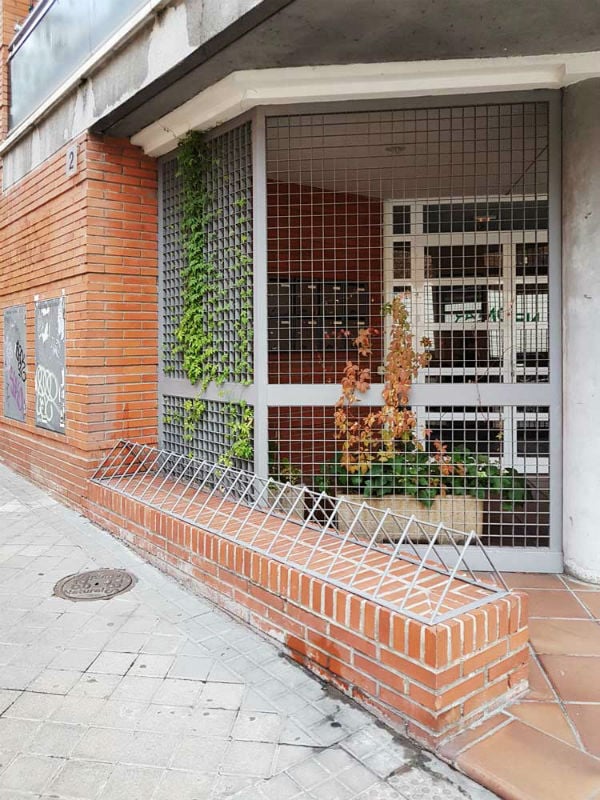
Anti-homeless spikes in Quintana. Photo by Leah Pattem.
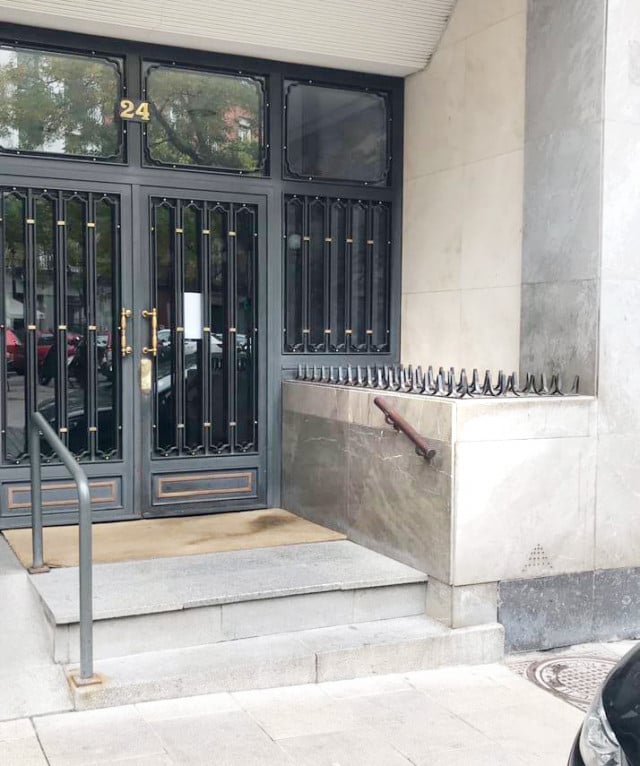 Anti-homeless spikes in Lavapiés. Photo by Leah Pattem.
Anti-homeless spikes in Lavapiés. Photo by Leah Pattem.
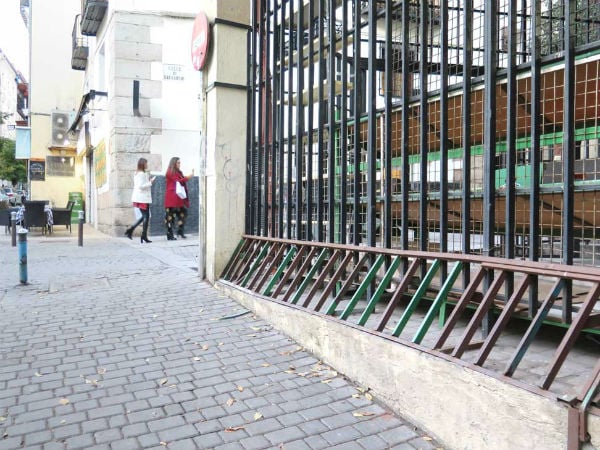
Calle Lavapiés.Photo by Leah Pattem.
A young sub-Saharan man used to sleep in the sheltered entrance below. He was there for months, and even used the bars on the right-hand window as hooks for his jackets.
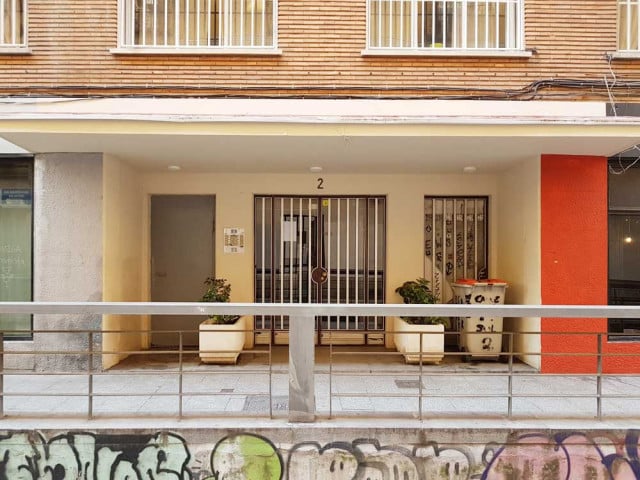
Flower boxes placed strategically. Photo by Leah Pattem.
One day last year, I walked past and saw his belongings tied up inside a blanket he used to sleep on. Street cleaners were hosing down the entrance, and concrete flower boxes were installed later that week. This man is still homeless – he just sleeps elsewhere now.
HOSTILE BIKE RACKS
Bike racks stop homeless people sleeping in specific areas.
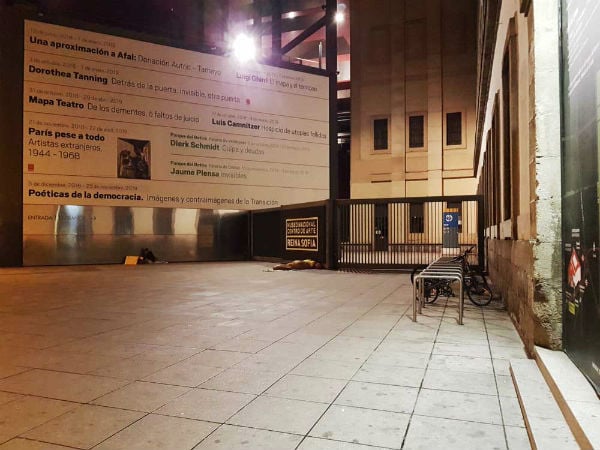
Outside the Reina Sofía. Photo by Leah Pattem.
BANKIA
The branch of Bankia on Calle Duque de Alba once controversially erected a number of bollards in a corner routinely used by homeless people and has now walled up the corner entirely.
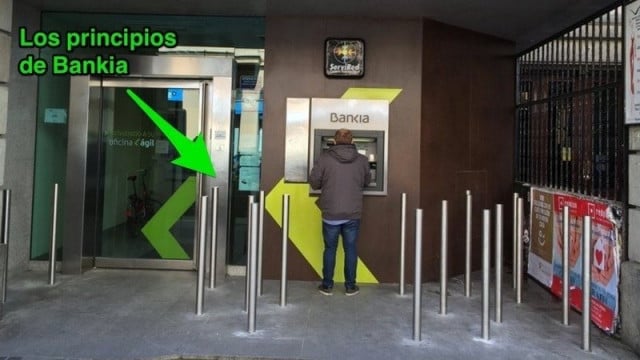
Bankia’s earlier hostile bollards. Photo: Change.org
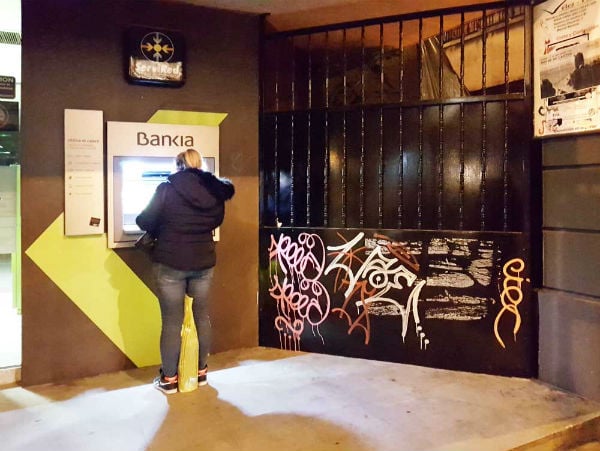
Bankia today. Photo by Leah Pattem.
Imagine returning from a day of begging, wandering or even working to find spikes jutting out of the corner where you slept last night. You may feel the city’s message is loud and clear:
“They should move on. They’re scaring tourists. They’re bad for business.”… said former mayoral candidate Esperanza Aguirre.
Under Madrid’s current mayor, Manuela Carmena, millions of euros are being put into making Madrid’s urban landscape more friendly to pedestrians, yet secret defensive features continue to be rolled out – a symptom of a municipality that is torn between improving Madrid’s look and dealing with its hardest issues.
Anti-homeless architecture is a disturbing symptom of a city that, for a long time, has chosen to patch the leak rather than get to the root of the cause, but as winter draws in and Samur Social opens its doors to the most vulnerable, Madrid appears to be softening its subtly spiky exterior. In the town hall’s recent budget, almost €1.5 million was allocated to helping the homeless – far more than in previous years – and it’s partly thanks to you. How?
YOU DECIDED
Carmena introduced Decide Madrid, an online system that gives the citizens of Madrid a voice. Here, you can propose ideas about how the town hall should allocate their budget, then vote for these proposals. In addition to pedestrianising Gran Vía and restricting traffic to the centre, Madrid chose to help the homeless.
Talking about Madrid’s darker issues is the first step; it raises awareness of the issues our city faces and, because of this, it’s starting to look like we, as a city-wide community, really can make a difference to those who desperately need it.
Leah Pattem is the founder of Madrid No Frills, a blog that celebrates those overlooked corners of Madrid untouched by the gentrification and modernization that has transformed the city in recent decades.
To discover stories that reveal the grittier, real side of Spain's capital, follow her adventures on Facebook and Instagram.
READ MORE: 'Madrid is a humble city of overlooked treasures and untold stories'


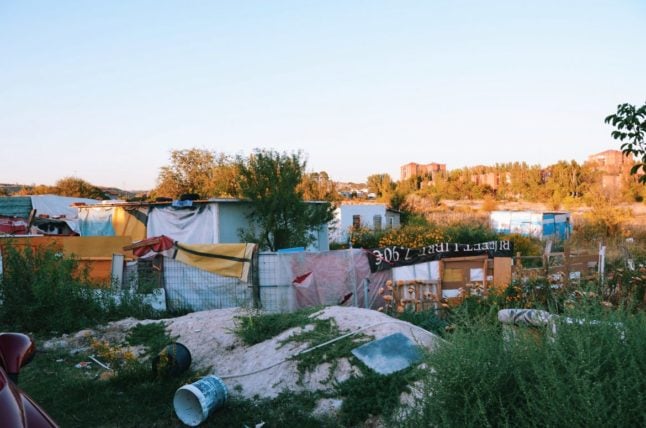
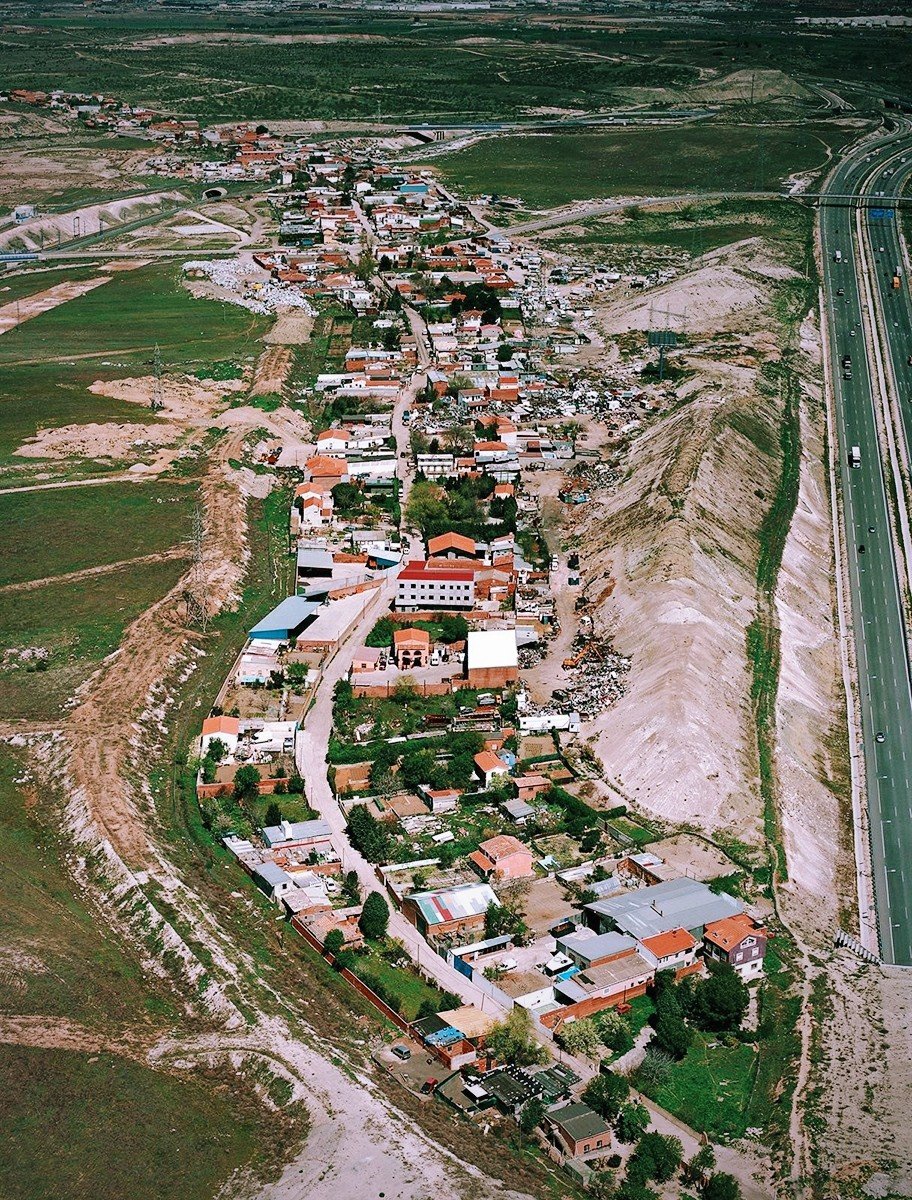
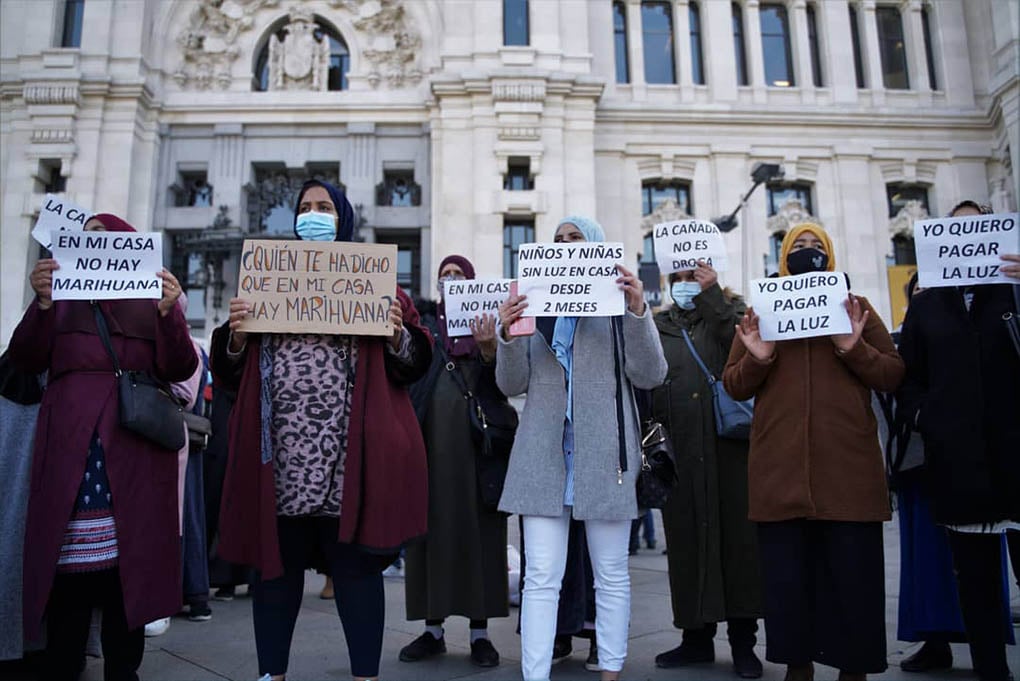
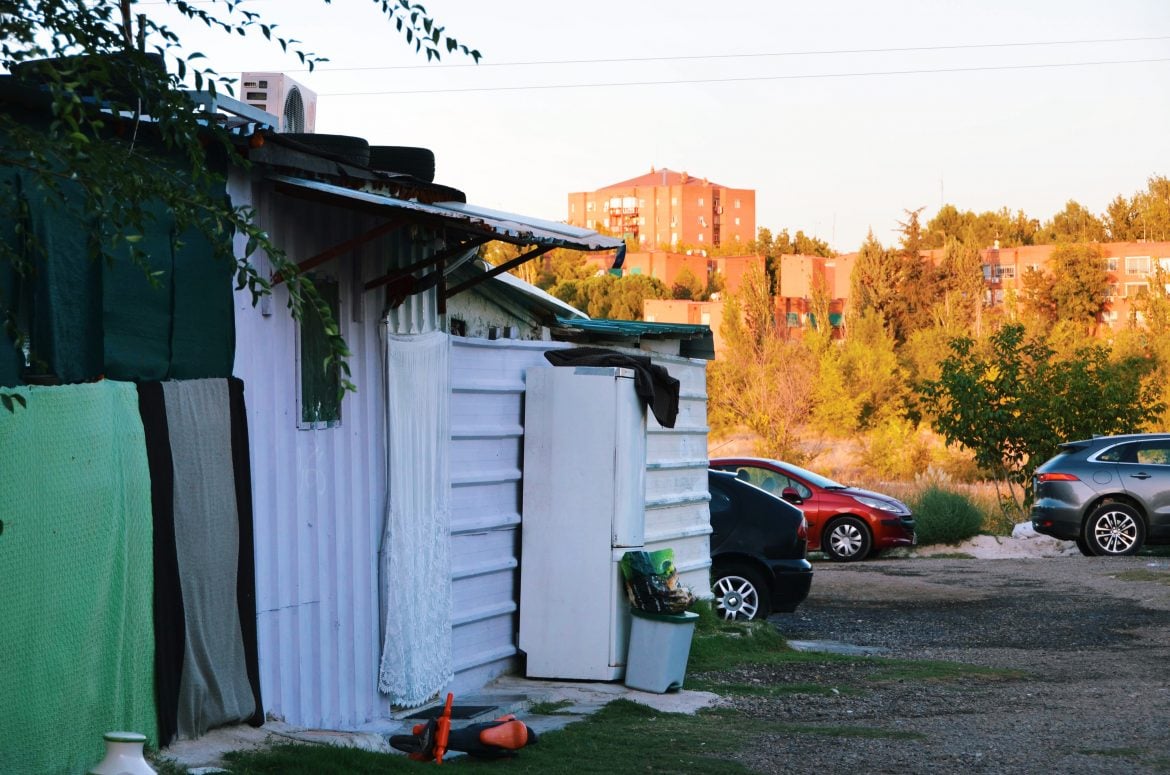
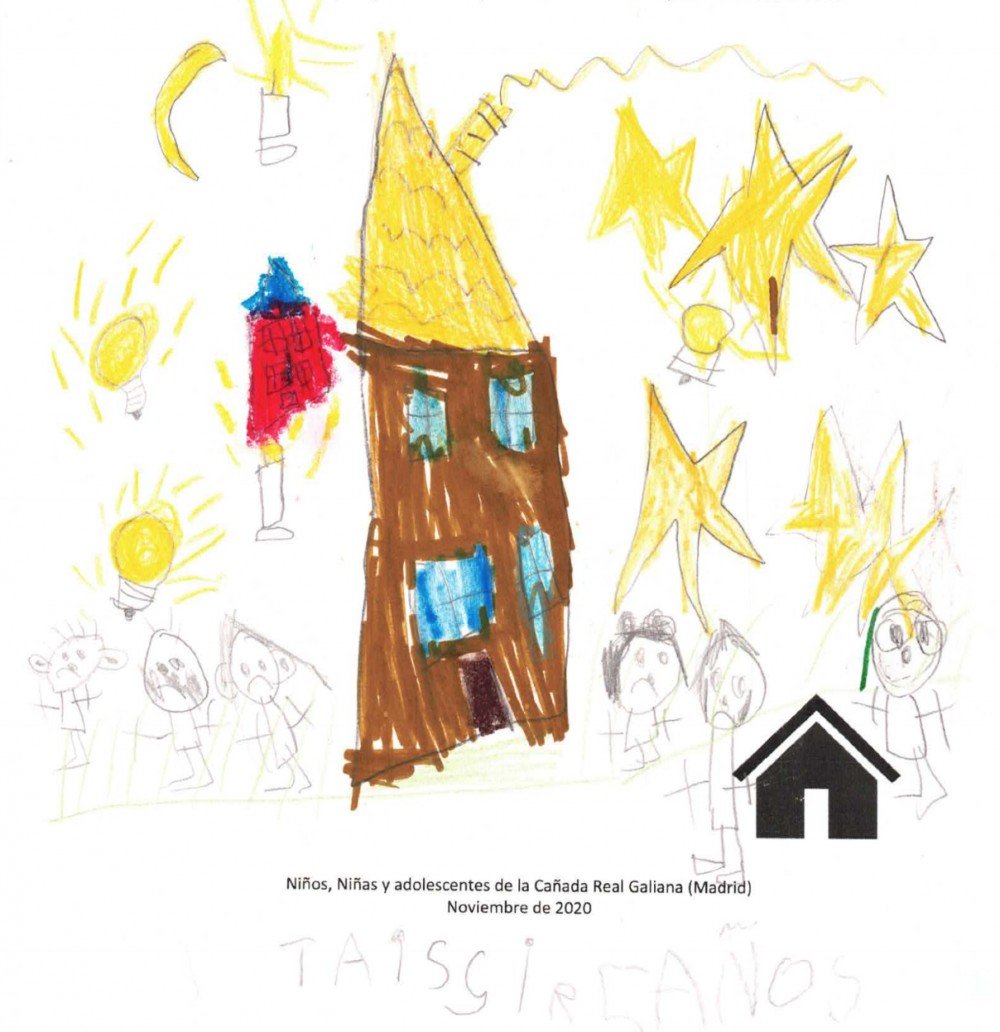
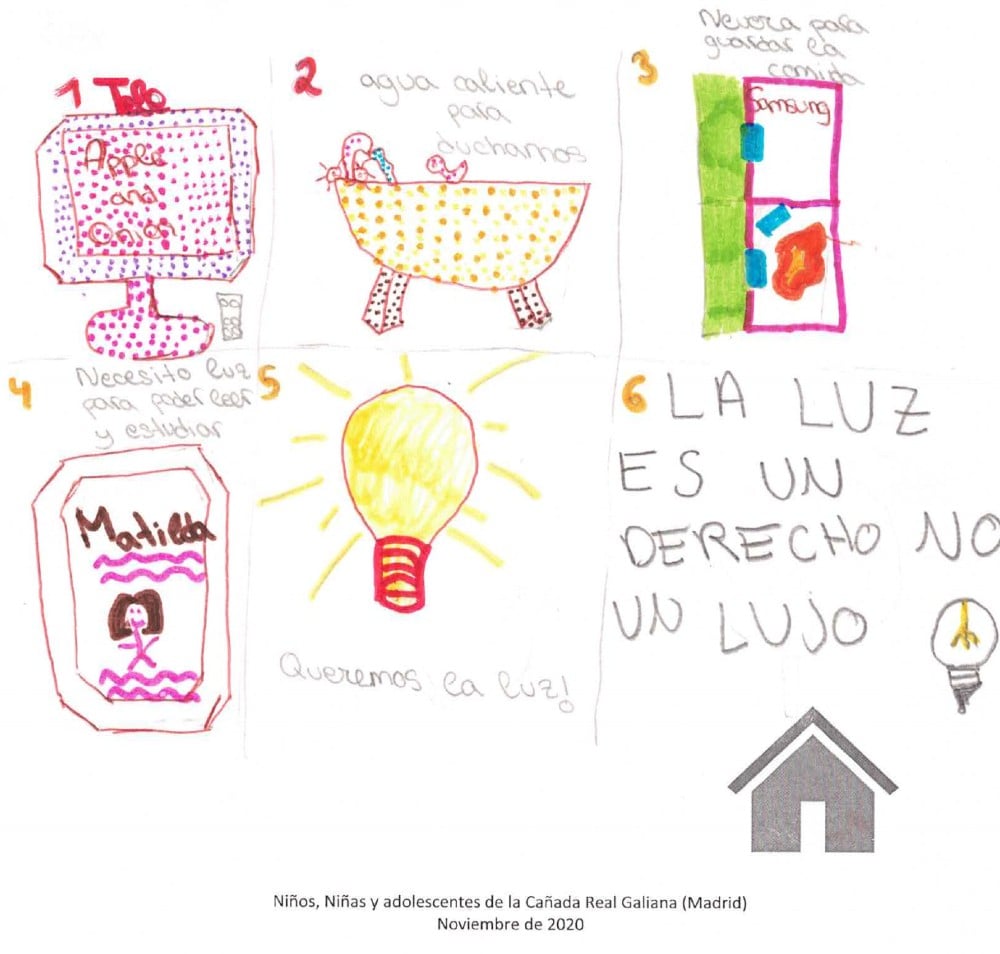
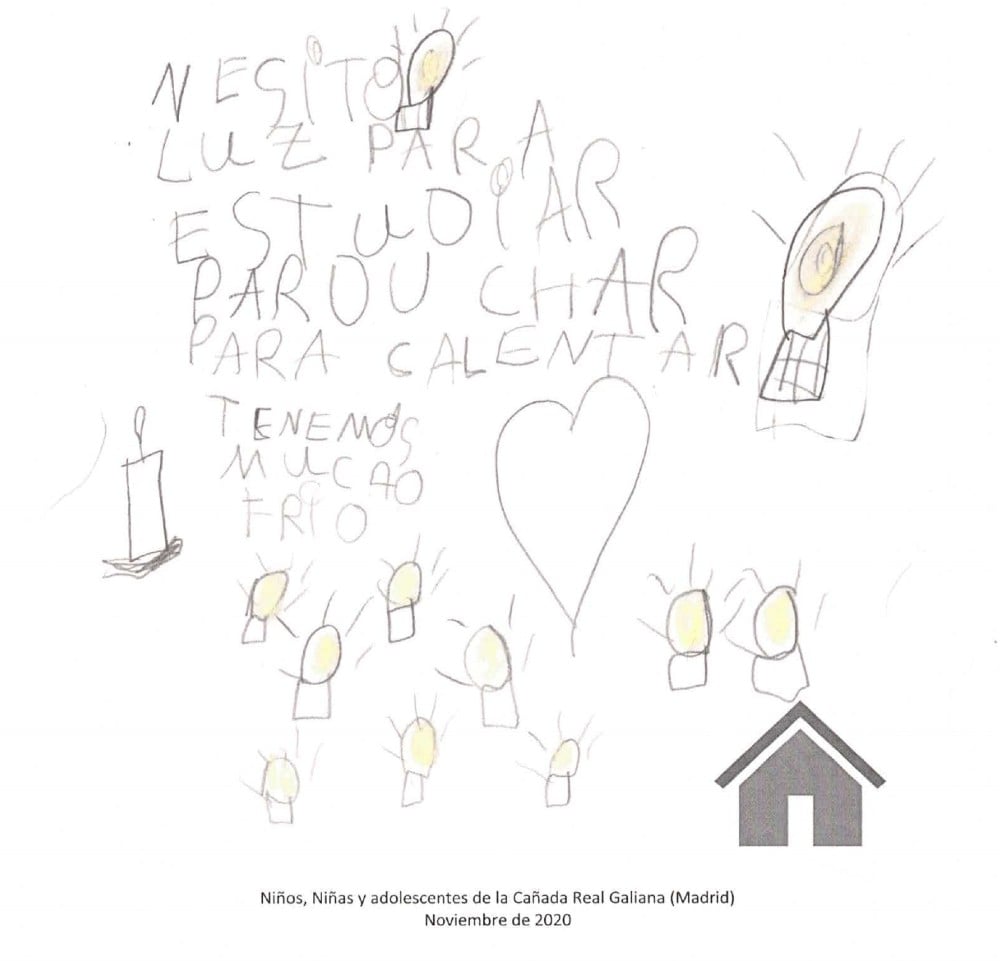
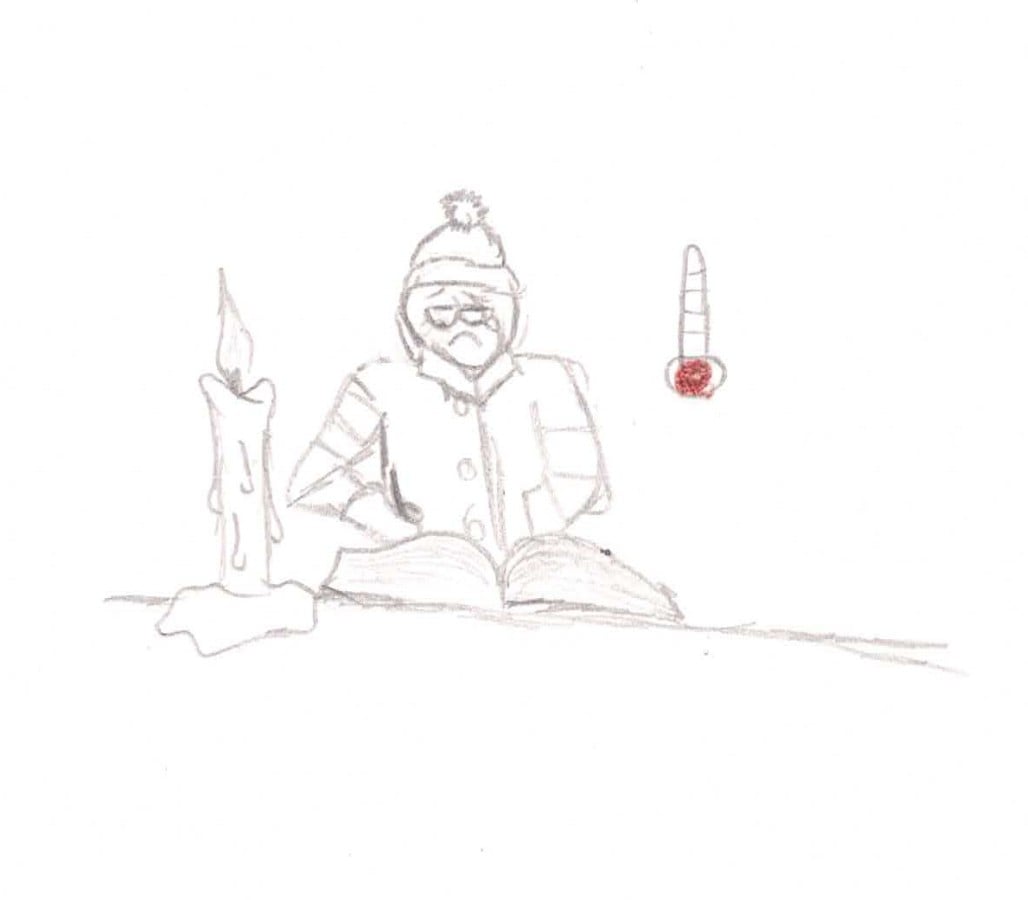
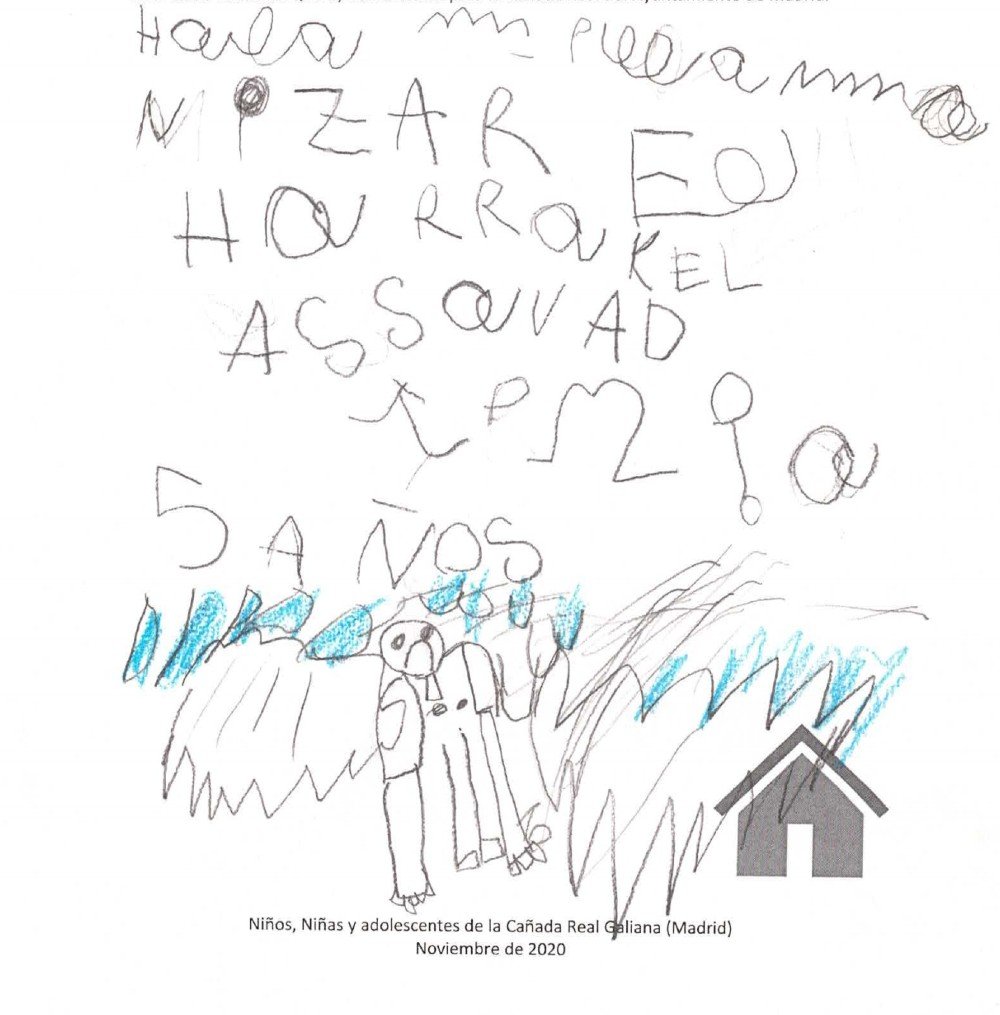
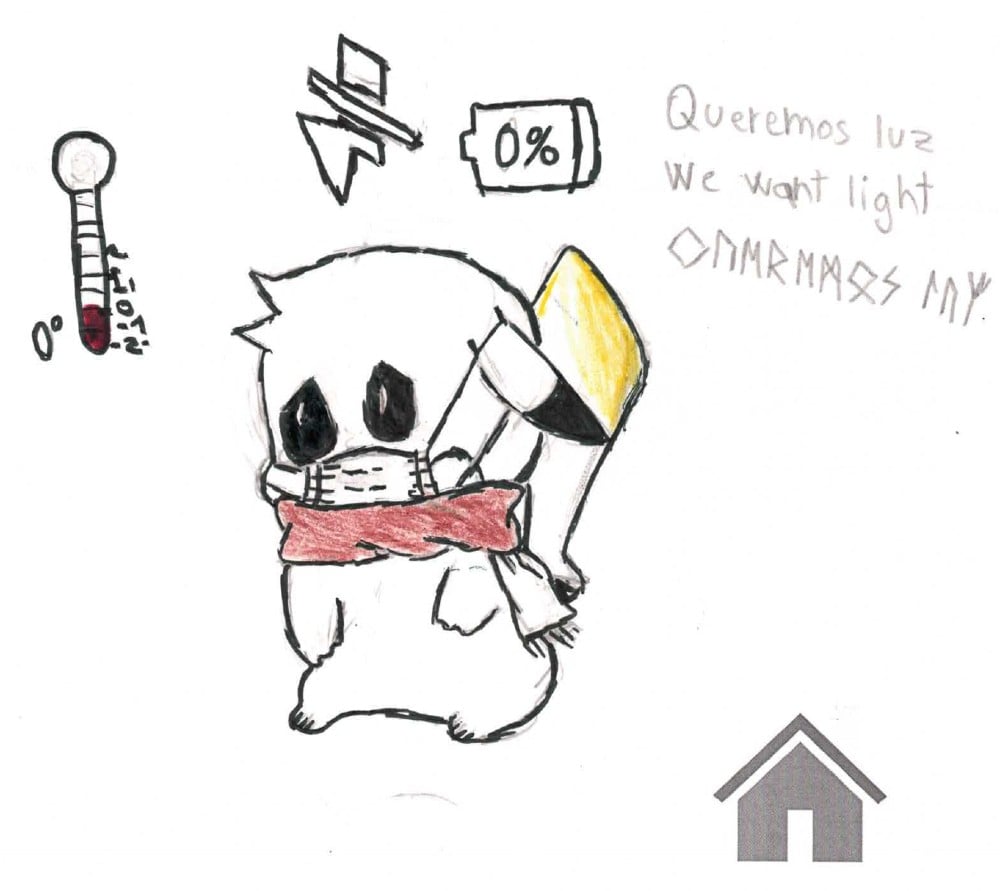
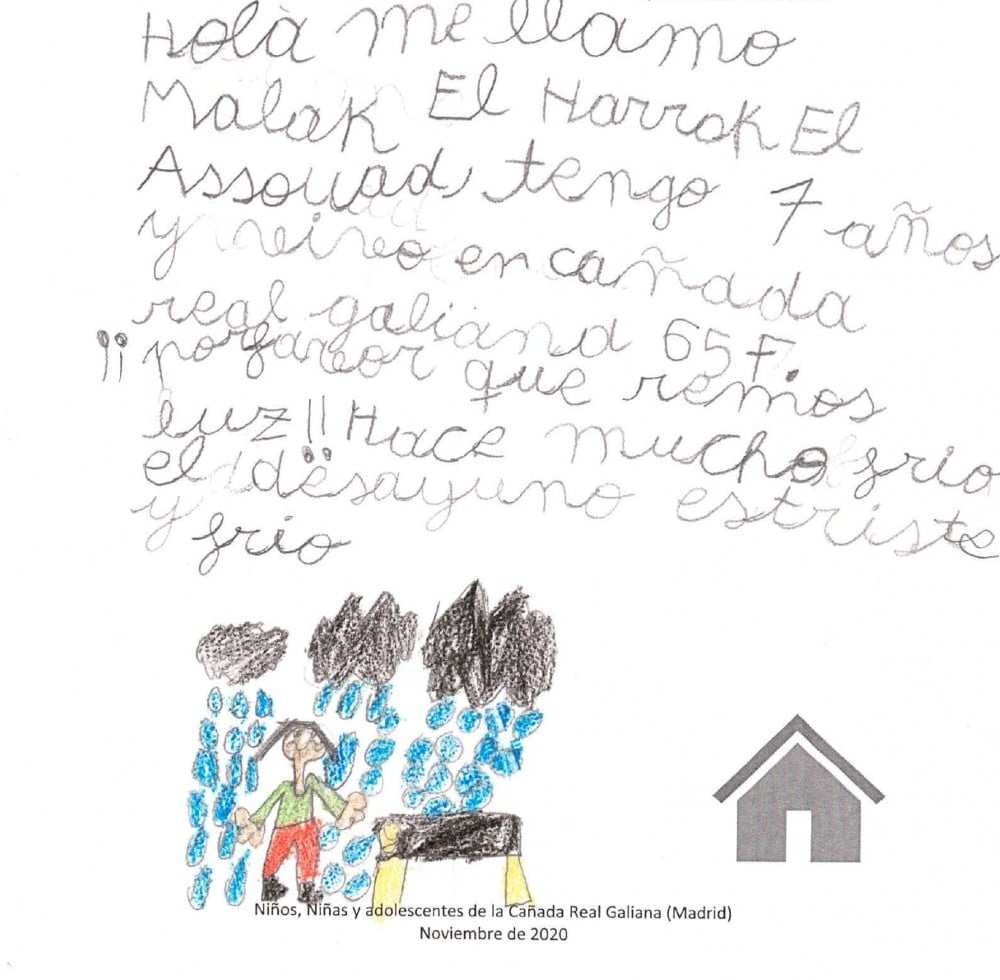
 Please whitelist us to continue reading.
Please whitelist us to continue reading.